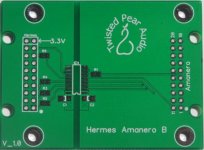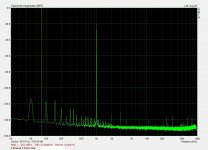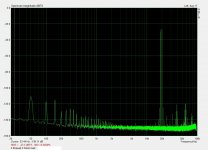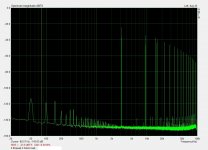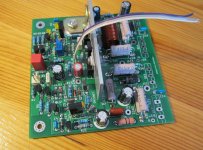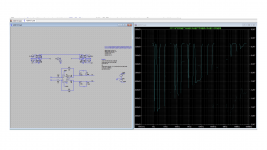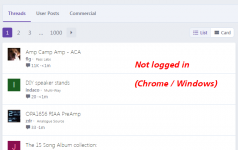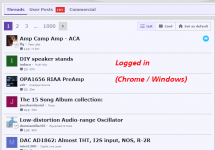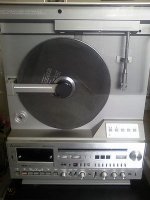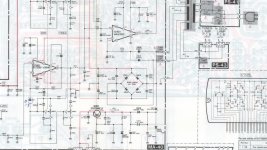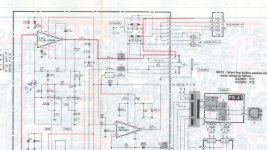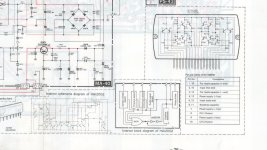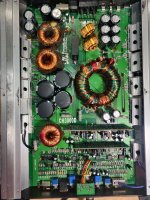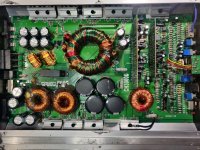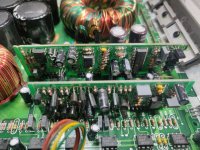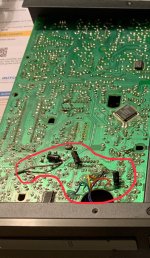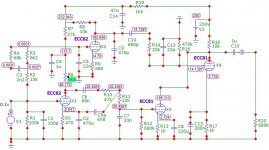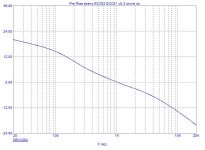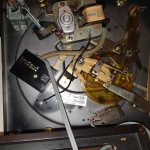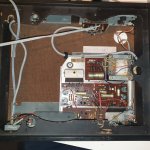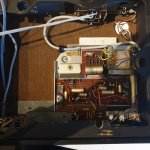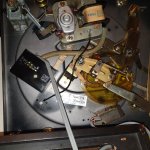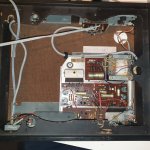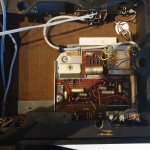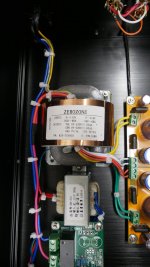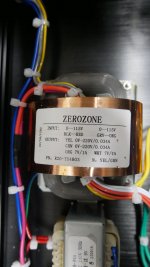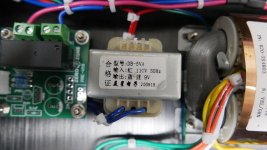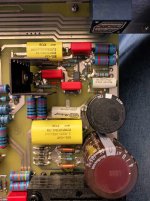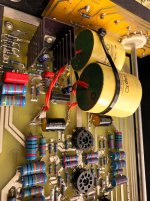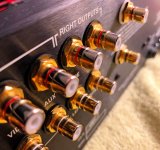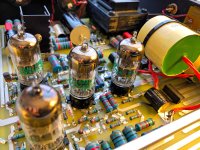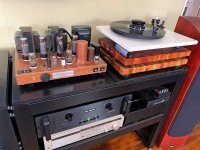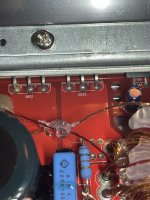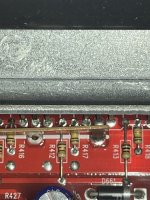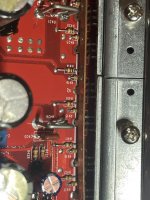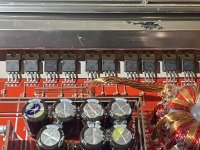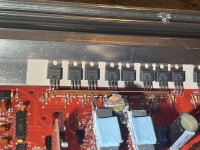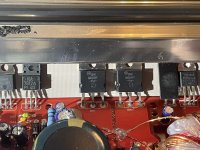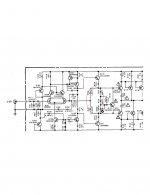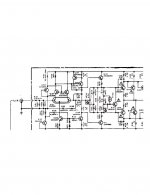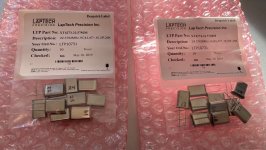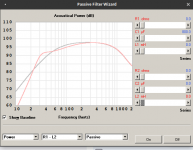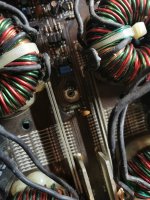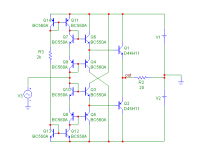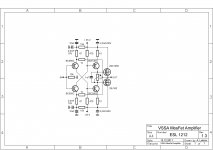Hi,
I have a low noise, low distortion distortion transistor audio power amplifier design. Built 2 mono and 3 stereo prototypes so far that work fine. This is a DiY design, but I believe it was more carefully tested under non-ideal conditions than the majority of DiY designs we encounter on the internet. The 1 kHz THD was measured 0.0006%...0.0013% on the prototypes depending on power level and load (loads down to 3.5 ohms, output power from 0.2 Watts up to 200 Watts /3.5 ohms). Below 0.2 watts, distortion harmonics are masked in the noise floor of my equipment even with averaging. Other kind of more challenging distortions like 19+20 kHz IMD and TIM(DIM) -- see images -- are low at all power levels and at all permitted loads. Capable of 200 Watts/ 4 ohms or 110 Watts /4 ohms output power depending on component set.
A nulltest (google "audio nulltest" if you don't know what it is) showed that the amplifier has no audible distortion at normal listening volumes, so it can be considered as totally transparent sonically. (Well, I understand some people like audible distortions if they color the sound pleasantly or interestingly. So this amp is for people who rather like reality.)
My open-ended offer is that I send you the kit you choose (one of the 4 different kits that are available) at a non-profit price. This means you'll get the specified PCB's and components at the price I bought them, and I won't charge my wage of labor either. I do this to make this design and the kits more popular among DiYers. I only ask in return: please give me feedback how I can improve the completeness and quality of the online information, especially the assembly instructions.
All kits contain the low distortion power amplifier board(s), power supply board(s) and protection board(s) and the components to populate the boards as covered in the online documentation. (User selectable components like chassis, main heatsink, main filter capacitors, power transformer(s) etc. are not part of the kits.)
http://euraudio.dx.am/en/amp/LDA/lda_np_kits_en.htm
The home page of the LDA amplifier is this, where you'll find links to all information that is available right now (kit descriptions, specifications, assembly instructions, some measurements and listening tests):
LDA home
The circuitry is more complicated than the majority of DiY projects, it is not for beginners. If you don't have proven experience in audio amplifier construction, please don't buy it! (If you make a mistake and some components are blown, I can't help in troubleshooting, I can only resend the whole component set for the faulty circuit at the non-profit price until this sale is offered.)
The LDA MIN_np kit is the simplest and cheapest (2x100W stereo) kit of the 4, it has only a minimalist protection circuitry. The LDA 53DM_np kit is the most expensive and most reliable (2x200W dual mono) kit; regarding protection, it survived 3 output short circuits during the testing without degradation of output signal quality due to the fast acting ultra low distortion solid state relay in it.
You must pay the shipping costs, which may be significant outside of Europe (shipping is from Hungary).
Right now I have in stock components for 4 mono amplifiers (or 2 dual mono or 2 stereo). If there will be interest in more non-profit kits than this, then I'll need about 2 weeks to buy the necessary components.
Most of the kits are available on the German and UK ebays and some of them on the Hungarian vatera.hu. The price there contains the fee I need to pay ebay or vatera for the transaction.
If you are in the UK, in Germany, in Hungary, or in an English speaking country where ebay is present, then you can ask me to list your chosen kit on ebay if it is not listed.
If you're in another, non-English speaking country, I think you should transfer the non-profit price of the kit + shipping cost to my PalPay account in advance, which you could rightfully consider unsafe. Still thinking about registering on Amazon...
If you have any question, please ask.
[The image shows only the amplifier board without the output transistors and the tempco transistor. Those transistors are also part of the kits as well as other PCB's with the components specified in the assembly instructions, which, in most cases, are all the electronic and mechanical components that populate the PCB's.]
http://euraudio.dx.am/en/amp/LDA/LDA_53DM_np_assy.htm
http://euraudio.dx.am/en/amp/LDA/LDA_43S_np_assy.htm
http://euraudio.dx.am/en/amp/LDA/LDA_53M_np_assy.htm
http://euraudio.dx.am/en/amp/LDA/LDA_MIN_np_assy.htm
Istvan
